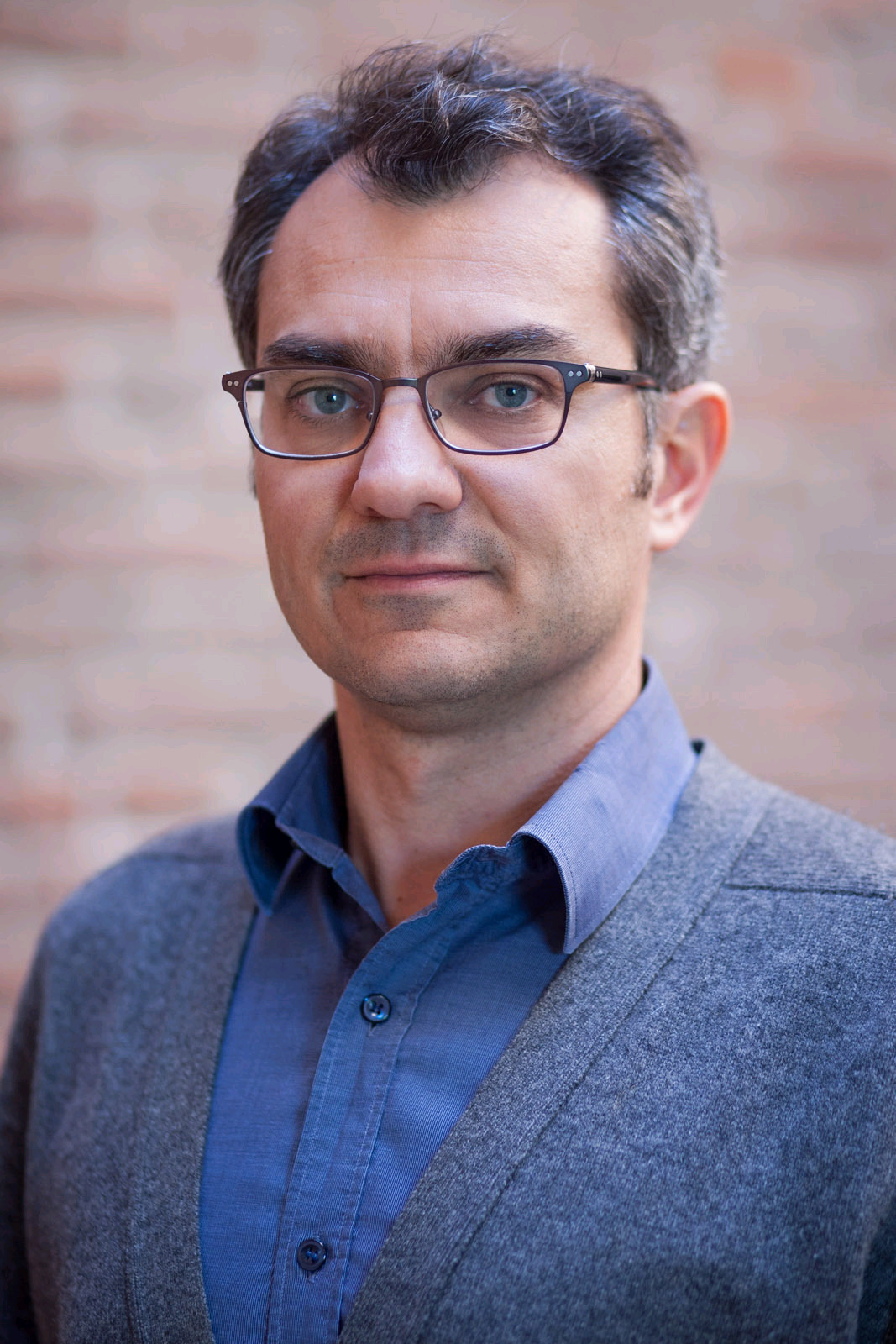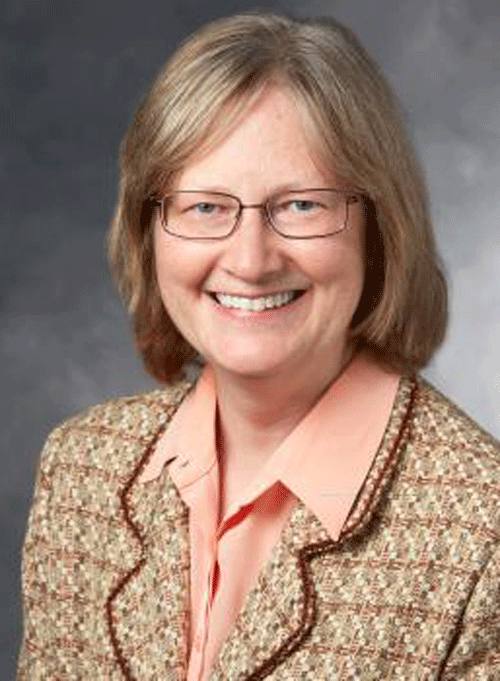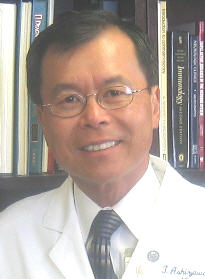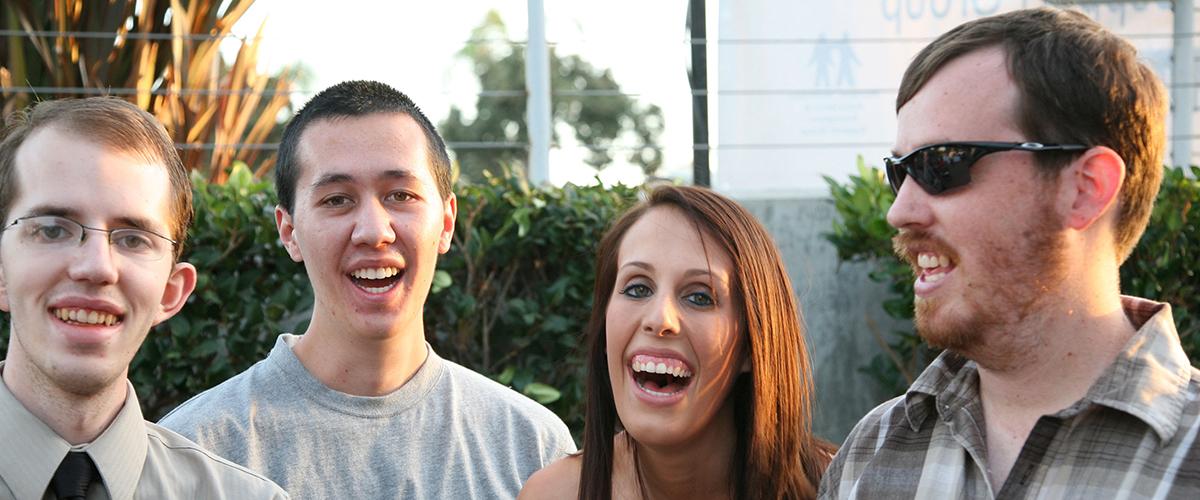Dr. Berglund is the Director of the RNA Institute and an Empire Professor of Innovation in the Biological Sciences at the University at Albany. He received his BA in Biochemistry from the University of Colorado and his PhD in Biochemistry from Brandeis. He has studied the structure and function of RNA and the mechanisms of splicing throughout his career. He began studying myotonic dystrophy in 2002 when his first undergraduate student at the University of Oregon introduced him to the disease and the impact to his family. His group solved the first atomic resolution structure of the CUG repeats that cause myotonic dystrophy and they have many publications on the mechanisms of splicing in the context of myotonic dystrophy. In 2015, Dr. Berglund was one of the first DM Grant Recipients for his project, “Inhibiting transcription of CUG/CCUG expanded repeats with small molecules”. The Berglund lab has identified several classes of small molecules that rescue the molecular disruptions caused by myotonic dystrophy. The lab is working to understand the mechanisms through which these small molecules function and develop these molecules for future clinical trials for individuals with DM. For more information on Dr. Berglund, click here to visit his lab website.
Medical and Scientific Advisory Committee
The Myotonic Dystrophy Foundation Scientific Advisory Committee (SAC) is comprised of individuals who collectively have devoted more than 125 years to studying muscle diseases, specifically myotonic dystrophy.

Dr. Thornton is Professor of Neurology at the University of Rochester. He, along with Dr. Moxley, is a Co-Director of the MDA clinic at URMC. He received his BA and medical degree from the University of Iowa. His internship in Internal Medicine was carried out in the UCLA/SFV Program. He finished his residency in Neurology in 1985 at Oregon Health Sciences University and a fellowship in Neuromuscular Disease at Strong Memorial Hospital in Rochester in Experimental Therapeutics. He has received a number of grants for DM research and has published numerous results in professional journals. He is now beginning to focus on the treatment phase of research for myotonic dystrophy. For further information on Dr. Thornton, visit the URMC website.
Dr. Thornton is Professor of Neurology at the University of Rochester. He, along with Dr. Moxley, is a Co-Director of the MDA clinic at URMC. He received his BA and medical degree from the University of Iowa. His internship in Internal Medicine was carried out in the UCLA/SFV Program. He finished his residency in Neurology in 1985 at Oregon Health Sciences University and a fellowship in Neuromuscular Disease at Strong Memorial Hospital in Rochester in Experimental Therapeutics. He has received a number of grants for DM research and has published numerous results in professional journals. He is now beginning to focus on the treatment phase of research for myotonic dystrophy. For further information on Dr. Thornton, visit the URMC website.

Dr. Cynthia Gagnon, is a full professor at the Faculty of Medicine and Health Sciences at Sherbrooke University in Canada. She has a background in occupational therapy and now a career award researcher. She is the head of the Groupe de recherche interdisciplinaire sur les maladies neuromusculaires (GRIMN). This interdisciplinary and intersectorial team includes researchers in the field of neuropsychology, physical therapy, social work, occupational therapy, neurology, mathematics, engineer, epigenetics, social participation, etc. The GRIMN also have patient partners to support the patient’s voices in research.
Her work aims at improving clinical care and speed up trial readiness in the most prevalent neuromuscular diseases in Canada including myotonic dystrophy type 1. She has conducted one of the largest natural history of the disease through an interdisciplinary perspective to be able to document the progression of the disease and to identify significant predictor and explanatory factors related to participation in daily activities and social roles of patients such as work and autonomous living. She is also leading several initiatives related to outcomes selection and validation for clinical trials. She work on several initiatives related to knowledge translation including practice guidelines and interactive waiting room. Click here to learn more on the GRIMN website.

Dr. Monckton is Professor of Human Genetics (Institute of Molecular, Cell and Systems Biology) at the University of Glasgow. After graduating from the University of Bath with a BSc in Biochemistry, he went on to complete his PhD at the University of Leicester investigating genetic instability at the minisatellite repeat loci used in DNA profiling. He then received a Muscular Dystrophy Association Fellowship to move to Baylor College of Medicine where he first began working on myotonic dystrophy type 1. After completing his fellowship at the MD Anderson Cancer Center he moved to the University of Glasgow here he established his own group. He is internationally recognized for his work in understanding the molecular turnover and role of tandemly repeated DNA sequences in the human genome and their relationship to inherited disease, with a specific focus on the CTG repeat within the gene associated with myotonic dystrophy type 1. Over the past 15 years, Dr. Monckton has contributed to numerous publications on genetic instability, has been awarded numerous grants, and is a sought after presenter at myotonic dystrophy focused conferences around the world. He also serves on many advisory boards and committees. For further information on Dr. Monckton, including his research interests, visit the University of Glasgow website.

Dr. Kerr is Chief Development Officer at Generation Bio. He previously served as global development team lead and vice president for neurology at Shire \where he was responsible for the development of the rare neuroscience programs. He also served as senior director of corporate strategy and portfolio management at Biogen, where he led the development effort for myotonic dystrophy and other neuromuscular diseases. Dr. Kerr was on the faculty of The Johns Hopkins School of Medicine as associate professor of neurology with joint appointments in the Department of Molecular Microbiology and Immunology and Cellular and Molecular Medicine, and ran a lab that investigated fundamental aspects of motor neuron/axon biology, provided direct patient care and ran clinical trials. He received his medical degree from Jefferson Medical College, as well as his doctorate in biochemistry and molecular biology. Dr. Kerr obtained his Master of Business Administration, with a specialization in entrepreneurship and finance, as well as his Bachelor of Science degree in molecular biology from Princeton University.

Dr. Wang is an Associate Professor in the Department of Molecular Genetics & Microbiology and Center for NeuroGenetics at the University of Florida. He studies myotonic dystrophy and other repeat expansion diseases, with a focus on RNA processing and gene regulation. He has chosen to focus on DM in his scientific career because he has immediate and extended family members living with DM1. He received his BA in Biochemistry from Harvard College and his PhD from the Harvard-MIT Division of Health Sciences and Technology; following receipt of an NIH Early Independence Award, Eric became a Koch Institute Fellow at MIT. In 2012, Dr. Wang was awarded a DM Research Fellowship from MDF for his research on “Identification of RNA Processing Changes in the Myotonic Dystrophy Transcriptome.” His lab has been funded by grants from Muscular Dystrophy Association, NIH, the Chan-Zuckerberg Initiative, and others. He co-founded the Strength, Science & Stories of Inspiration event held in Boston, which raises awareness of DM and funding for MDF. Eric is active in both the academic and industry spaces, and continues to work with biotech and pharma to help advance promising therapeutic strategies to DM patients. He has worked closely with MDF in various capacities for over 10 years, including serving on the MDF's Strategic Planning Committee in 2021, to help advocate for and support the DM community, and looks forward to serving as an SAC member. Click here to learn more about the Eric T. Wang Labratory.

Dr. Guillaume Bassez is a neurologist and head of the Translational Myotonic Dystrophy Research Group at the Institut de Myologie in Paris. He established the International DM Standardized Registry, or DM Scope, in France, which currently includes 3,000 DM1 patients. Dr. Bassez has focused a portion of his research on identifying ways to determine differences in the way DM manifests itself and progresses in different portions of the DM1 population, because stratifying the disease is important for clinical studies and clinical trials. His previous work showed to the surprise of many that the clinical manifestations of myotonic dystrophy (DM) in men and women were different. He recently contributed to a four-country study, titled “OPTOMISTIC,” that looked at non-drug approaches to treating DM. This involved the use of cognitive behavior therapy and aerobic exercise as a way to address fatigue and related problems such as sleepiness and inactivity that DM patients experience. Today there is no approved drug for these symptoms. The study reported out in summer 2018 with positive results.

Dr. Jacinda Sampson received her MD and a PhD in biochemistry from University of Alabama at Birmingham, and completed her neurology residency and neurogenetics fellowship at the University of Utah. She served at Columbia University Medical Center prior to joining Stanford University Medical Center in 2015. Her areas of interest include myotonic dystrophies, Duchenne muscular dystrophy, and neurogenetic disorders such as neurofibromatosis, hereditary spastic paraparesis, spinocerebellar ataxia, among others. She is interested in clinical trials for treatment of neurogenetic disorders, and is the clinical application of next-generation genomic sequencing to genetic testing. Click here to learn more about Dr. Sampson and her work.

Dr. Day relocated to Stanford University, as Professor of Neurology, Pediatrics and Pathology, in 2011 in order to build a comprehensive center for understanding and treating muscular dystrophy, serving as Director of Stanford’s Neuromuscular Medicine Program in the Department of Neurology and Neurological Sciences. Dr. Day remains an active member of the University of Minnesota collaborations he helped forge as Director of Minnesota’s Paul and Sheila Wellstone Muscular Dystrophy Center. He is working to integrate California and Minnesota resources with the international network of myotonic dystrophy research to assure that this most common form of muscular dystrophy is conquered as soon as possible. Dr. Day attended medical school at the University of Minnesota, graduating in 1977. He attended graduate school at Albert Einstein College of Medicine and completed his internship in Internal Medicine in New York. He did his residency in Neurology and a Fellowship in Clinical Neurophysiology and Neuromuscular Disease at the University of California in San Francisco. In 2001, along with Laura Ranum, PhD and team, he participated in the identification and genetic characterization of myotonic dystrophy type-2 caused by a mutation on the third chromosome. He has published numerous articles on myotonic dystrophy in professional journals and is currently conducting a brain-imaging study of affected individuals. For further info on Dr. Day, visit the Stanford University website.

Dr. Bishop has over 20 years of experience in drug development and research, having led the department of novel therapeutics in a variety of neurological and rare genetic disease areas. She has experience leading preclinical as well as clinical development from IND filings through Phase 3 registration-enabling studies. Currently, Dr. Bishop is the Chief Scientific Officer of Otonomy Inc. Prior to that, Dr. Bishop was Chief Science Officer at Locana Bio. Prior to her current appointment Dr. Bishop served as CSO at Tioga Pharmaceuticals, and Vice President of Clinical Development at Ionis Pharmaceuticals, where she provided drug development leadership to a portfolio of programs within the neurology franchise and led clinical stage development programs in Spinal Muscular Atrophy, Myotonic Dystrophy and Amyotrophic Lateral Sclerosis. Dr. Bishop was also Director of Research and Development at Ceregine, Inc., where she led the preclinical development of viral-vector based therapeutics for degenerative diseases including Alzheimer's, Huntington's, Parkinson's, ALS and retinal degenerative diseases. Dr. Bishop also has extensive experience in successfully partnering programs with pharmaceutical companies. She received her PhD in neuroscience from the University of Alberta, Canada, and conducted post-doctoral fellowship work at the Salk Institute in La Jolla, California, in molecular neurobiology.

Dr. Ranum is a Professor of Molecular Genetics and Microbiology and Director of the Center for Neurogenetics at the University of Florida. She uses gene discovery and mouse models to understand neurologic and neuromuscular diseases. Her laboratory identified the DM2 and spinocerebellar ataxia type 8 (SCA8) expansion mutations and has developed mouse models of these diseases. In 2006, her group demonstrated that the expansion mutations in SCA8, which has a mutation similar to DM1 and DM2, produces RNAs in both directions. In 2011 her group discovered that a cellular signal that scientists previously though was required for cells to make proteins does not apply to expansion mutations and that expansion mutations can express unexpected mutant proteins in all three reading frames. Additionally, her group and other groups have shown that RAN proteins accumulate in patient tissues in several diseases, including SCA8, DM1 and C9orf72 ALS/FTD, FXTAS. Dr. Ranum's group is now focused on understanding the mechanisms of RAN translation and the impact of RAN proteins in myotonic dystrophy and other neurological diseases. More information on Dr. Ranum can be found on the University of Florida website.

Dr. Johnson is an associate professor of Neurology and Human and Molecular Genetics and vice chair of research in Neurology at Virginia Commonwealth University with a focus in inherited neuromuscular disorders. He received his undergraduate degree in molecular and cellular biology and psychology at the University of Arizona. He then obtained his medical degree at the University of Arizona. He completed his neurology residency and combined fellowship in neuromuscular medicine and experimental therapeutics at the University of Rochester. His laboratory is focused on identifying the pathogenesis and progression of myotonic dystrophy, including pediatric forms, and and identifying appropriate clinical endpoints for these conditions. Dr. Johnson was both a MDF Fellowship and Grant Recipient, who now leads the international Myotonic Dystrophy Clinical Research Network (DMCRN) and is currently the PI of the END DM1 study as well as a natural history study in children with congenital myotonic dystrophy. He also conducts therapeutic trials in many other inherited nerve and muscle disorders, including limb girdle muscular dystrophy and facioscapulohumeral muscular dystrophy. Click here to learn more about the Johnson Laboratory.

Dr. Cooper is a Professor in the Departments of Pathology & Immunology, Molecular & Cell Biology and Molecular Physiology & Biophysics at Baylor College of Medicine in Houston, Texas. After receiving his medical degree from Temple University Medical School, Dr. Cooper obtained postdoctoral training at the University of California, San Francisco, where he initiated a longstanding investigation of alternative splicing regulation. He joined Baylor College of Medicine in 1989 and in 2003 became full professor and was named to the S. Donald Greenberg endowed chair. His laboratory contributed to identification of the RNA gain of function mechanism responsible for the molecular mechanism of myotonic dystrophy pathogenesis, specifically the disruption of developmentally regulated alternative splicing. Currently his laboratory investigates the physiological roles of alternative splicing as well as the mechanisms and consequences of its disruption in myotonic dystrophy. His laboratory also demonstrated the feasibility of using gapmer antisense oligonucleotides to degrade the toxic RNA that causes myotonic dystrophy. More information on Dr. Cooper can be found on his lab website.
Emeritus Members

Dr. Moxley is retired Professor of Neurology and Pediatrics, Division of Medicine, at the University of Rochester in Rochester, New York and Director of the Wellstone Muscular Dystrophy Center. After graduating from Harvard and the University of Pennsylvania Medical School, he completed his internship in Pennsylvania and then a Heart Disease and Stroke Control Program at NASA Headquarters. His residency was in Neurology at Harvard Medical Center and his fellowship in Medicine at Johns Hopkins University. He completed a Postdoctoral NIH special fellowship in Endocrinology and Metabolism at Johns Hopkins. In addition to the directorship of the muscular dystrophy center, he is Associate Chairman of the Department of Neurology at Strong Memorial Hospital, and formerly Director of EMG/Nerve Conduction Laboratory at Strong Memorial Hospital. With support from the NIH he initiated the National Registry for DM and FSHD (facioscapulohumoral dystrophy, another form of muscular dystrophy), a tool investigators can use to incorporate affected DM family members into their research. He has published numerous articles on myotonic dystrophy in professional journals and serves on many advisory boards and committees. Dr. Moxley has carried out an investigation of Mexiletine, a medication that relaxes myotonia, or muscle stiffness; and is currently conducting a clinical trial of SomatoKine in individuals with myotonic dystrophy.

Dr. Ashizawa, Director of Neuroscience Research at the Houston Methodist Neurological Institute, graduated from Keio University School of Medicine in Tokyo in 1973. He completed his internship in Medicine in Pittsburgh, residency in Neurology and fellowship in Muscular Dystrophy at Baylor College of Medicine in Houston. While at Baylor he assisted one of several teams around the world in locating the DMPK gene for myotonic dystrophy. He has been given numerous research awards and grants - especially for myotonic dystrophy and ataxia. In 1997, he and Dr. Claudine Junien co-founded the International Myotonic Dystrophy Consortium (IDMC), a biennial scientific meeting where physicians and scientists convene to determine the cause and ultimately a viable treatment or cure for DM. Dr. Ashizawa has published numerous articles on myotonic dystrophy in medical and scientific journals. For more info on Dr. Ashizawa, visit the Houston Methodist Neurological Institute website.


